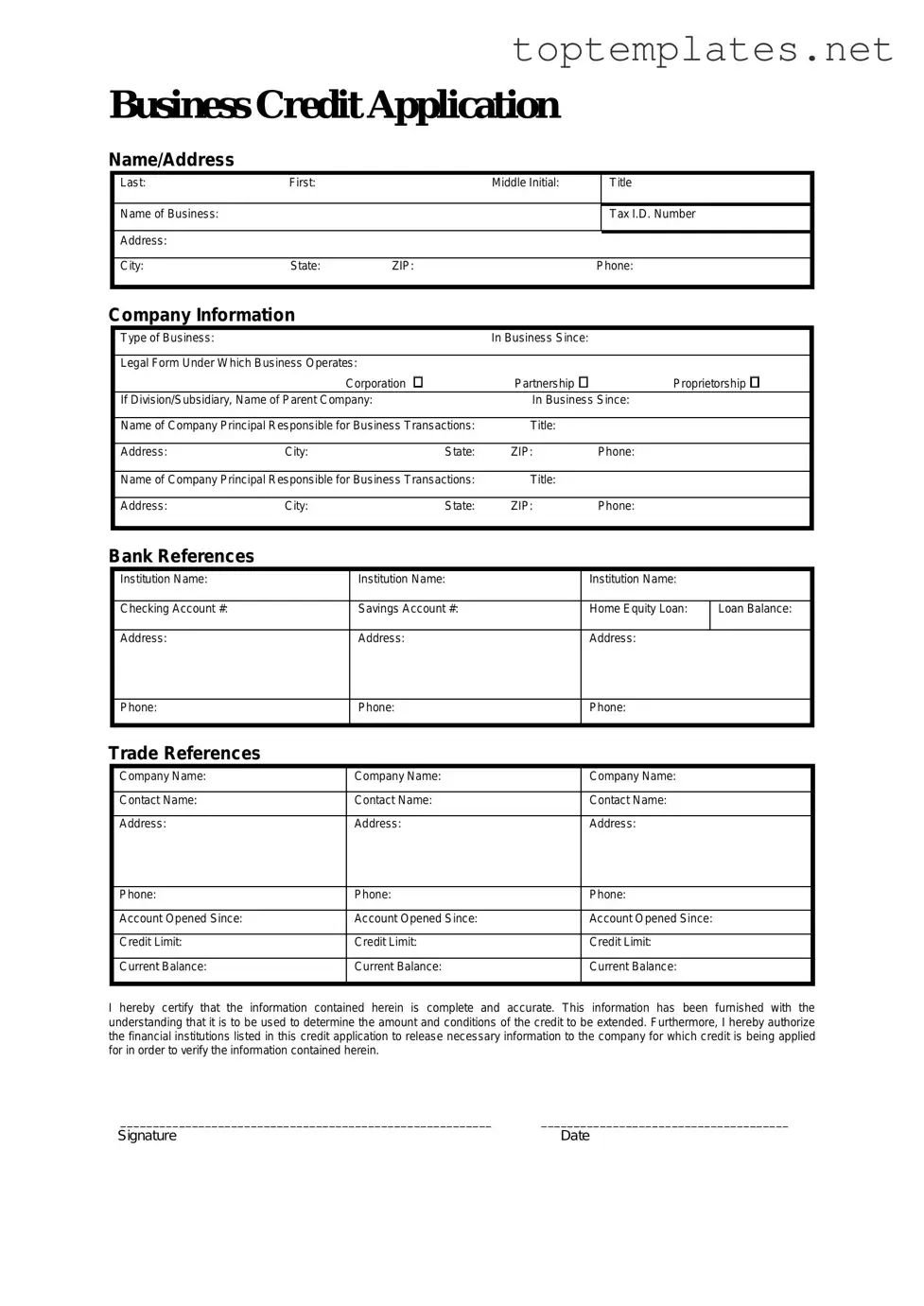What is a Business Credit Application form?
A Business Credit Application form is a document used by businesses to request credit terms from a supplier or lender. It typically includes information about the business seeking credit, such as company details, financial statements, and references. This form is the first step in obtaining credit, which can be crucial for business operations and growth.
Why do businesses need to fill out a Business Credit Application form?
Filling out a Business Credit Application form is essential for businesses that wish to establish a credit line with a supplier or obtain financing. It allows the supplier or lender to assess the creditworthiness of the business, determining whether they can reliably meet payment terms. This process helps manage risk and ensures that the business can access the goods or funds it needs on credit.
What information is typically required on a Business Credit Application form?
The form usually requests detailed information about the business, including legal name, type of business entity, federal tax ID, business address, phone number, and contact information of the owners or principals. Financial information, such as annual revenue, bank references, and other credit references, may also be required. Some forms may ask for details about the company's history and the purpose of the credit request.
How can a business improve its chances of approval through the Business Credit Application form?
To improve its chances of approval, a business should ensure all information provided on the form is accurate and complete. Providing solid financial statements, a history of on-time payments, and strong credit references can also help. It may be beneficial to include a cover letter explaining the reason for the credit request and how it will be used to grow the business.
Is it safe to provide sensitive information on a Business Credit Application form?
While there is always a degree of risk when submitting sensitive information, reputable suppliers and lenders have measures in place to protect this data. Ensure you are submitting the form through a secure method, such as an encrypted online platform or directly to a verified contact at the company. If in doubt, ask the recipient about their data protection policies.
Can a new business without a credit history apply for business credit?
Yes, new businesses without a credit history can apply for business credit, but the process may be more challenging. These businesses may need to provide more detailed financial projections, a business plan, or personal guarantees from the owners. Some lenders and suppliers are more open to working with new businesses, especially if there are clear growth potential and a solid business model.
What happens after submitting a Business Credit Application form?
After submission, the supplier or lender will review the information and perform a credit check to evaluate the business's creditworthiness. This review can take from a few days to several weeks, depending on the complexity of the application and the volume of applications the creditor is processing. The applicant may be asked for additional information or clarification. Once the review is complete, the business will be notified of the decision.
Is there a difference between personal and business credit applications?
Yes, there is a significant difference. Personal credit applications are based on an individual's credit history and financial stability, while business credit applications focus on the business's financial health and creditworthiness. Although business and personal credit may be linked, especially for small businesses, they are assessed using different criteria and for different purposes.
Can a denial of a Business Credit Application affect a business's credit score?
Simply applying for business credit does not affect a business's credit score. However, if the credit application leads to a credit check, that inquiry may be recorded on the business's credit report. Multiple inquiries in a short period can negatively impact the score. A denial itself does not affect the credit score, but the reasons behind the denial, such as high debt levels or payment delinquencies, may.
How often should a business update or resubmit a Business Credit Application?
A business should update or resubmit a Business Credit Application whenever significant changes occur in its financial situation, or if requested by the supplier or lender. Regular updates can also be beneficial if the business's financial health has improved, potentially leading to better credit terms. It's good practice to review financial relationships and terms annually to ensure they meet the business's current needs.

